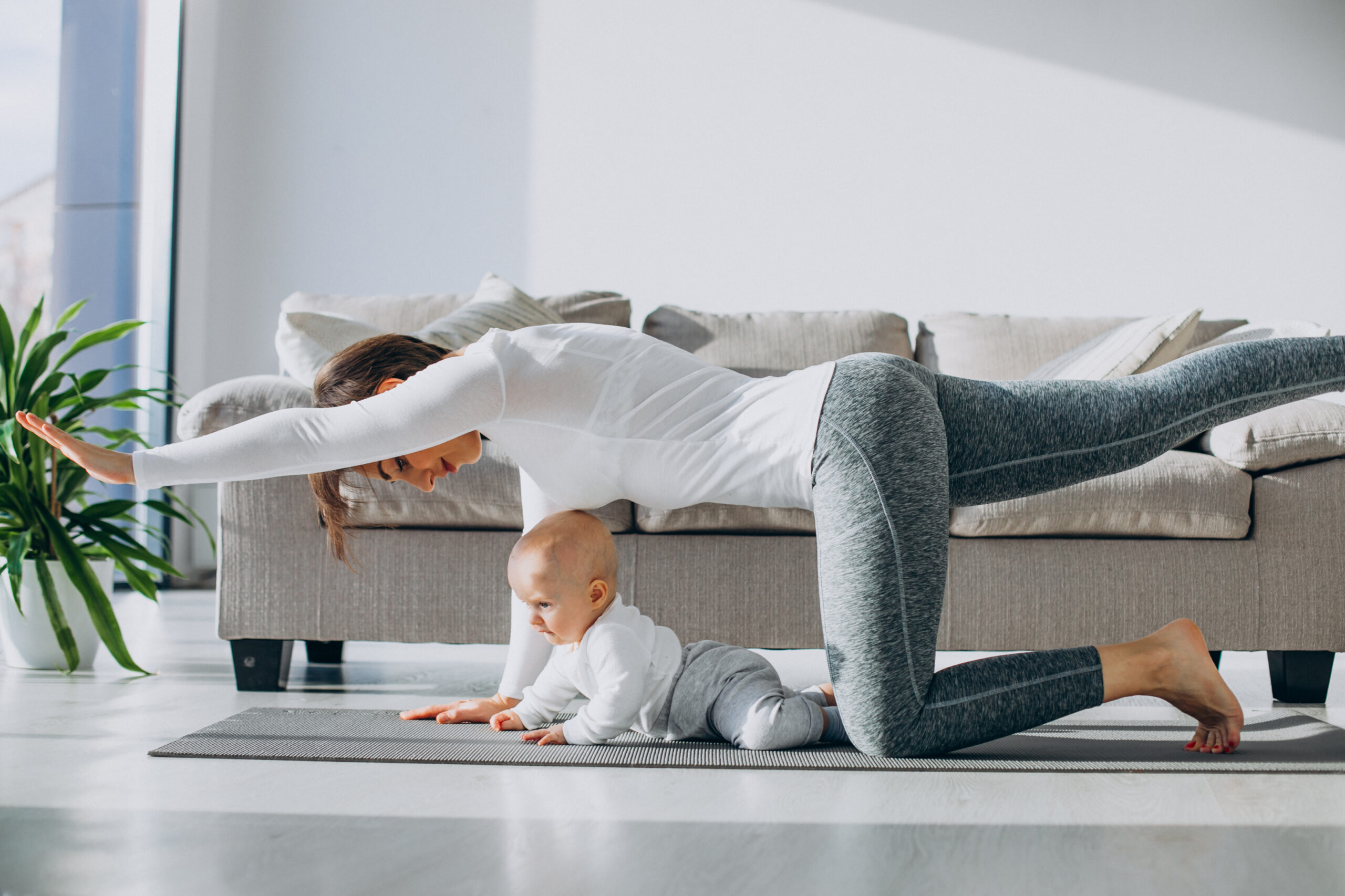The first 12 weeks of returning to exercise postpartum are all about taking it slow and at a pace you are comfortable with. Laying the foundations for a return to higher impact exercise after 3 months (at the earliest). The pelvic floor is your main priority postpartum. Learning to do an effective pelvic floor contraction can teach the muscle to work in all the ways it is needed in order to cope with daily life. The second focus in returning to exercise postpartum is to start engaging with the core and ease into loaded core work from Week 6 postpartum.
Cardio Exercise
Cardio can start in the first week postpartum with light short walks of 5-10 mins per day, building to 30 mins by the end of week 6. From then on, your chosen form of cardio (e.g walking, cycling, swimming or the elliptical at gym) can increase to 45 mins at a moderate intensity. It’s a good idea to use a tracker like a smartwatch to keep an eye on your heart rate as you build up the time and intensity.
Strength training
Strength training is a little more specific. We need to consider the healing times of the muscles, ligaments and fascia after pregnancy. Soft tissue can take up to 6-8 months to reach a near full recovery. The below listed week-on-week breakdown of strength training is only a guideline. Some women may progress quicker or slower than others.
- Week 0-6: Low load movement is started off on your back (e.g. pelvic tilts) and on your side (e.g. leg side raises). This lowers the effort through your core and pelvic floor. Every 2-3 weeks exercises are progressed by adding more gravity (eg standing up and doing squats) or targeting postural muscles with resistance (eg shoulder retractions with a band).
- Week 6-12: Here we start focussing on 3 key things:
- Integrating your pelvic floor exercises into a variety of movements (e.g inner thigh squeezes or sumo squats)
- Adding more weight and resistance to upper and lower body excesses (e.g bands, weights, machines)
- Starting core targeted exercises (eg curl ups, planks, table top). Core specific exercises will progress based on your ability to control the exercise. It is best to understand the basics of core control when taught by a Physio or postnatal trained pilates instructor.
Just remember…
In saying all the above, not everything goes to plan (that’s life!). Try not beat yourself up for not quite fitting into the above mapped out return to exercise guidelines. It is just that, a guideline. There are many outside factors that can add speed bumps to the journey. Lack of sleep, fatigue, breastfeeding, returning to work, family demands, lack of a set routine, etc. It is important to step back and view the bigger picture of the return to exercise journey. No one reaches the top of the mountain in one big jump. A series of smaller steps one after the other will ensure you get there eventually! Try not be too hard on yourself if it takes a couple of weeks longer than you hoped it would.
At the end of the day, your body is an absolute powerhouse for carrying you through pregnancy, childbirth and taking care of a beautiful baby. It’s all quite the miracle isn’t it – and so are you! Keep going, you’ve got this!
There is so much more that goes into getting back into a consistent exercise routine postpartum. For more content please follow our Postnatal Return to Exercise series for more valuable guidelines on getting yourself moving again.
The Ministry of Health NZ support the above timeline.
